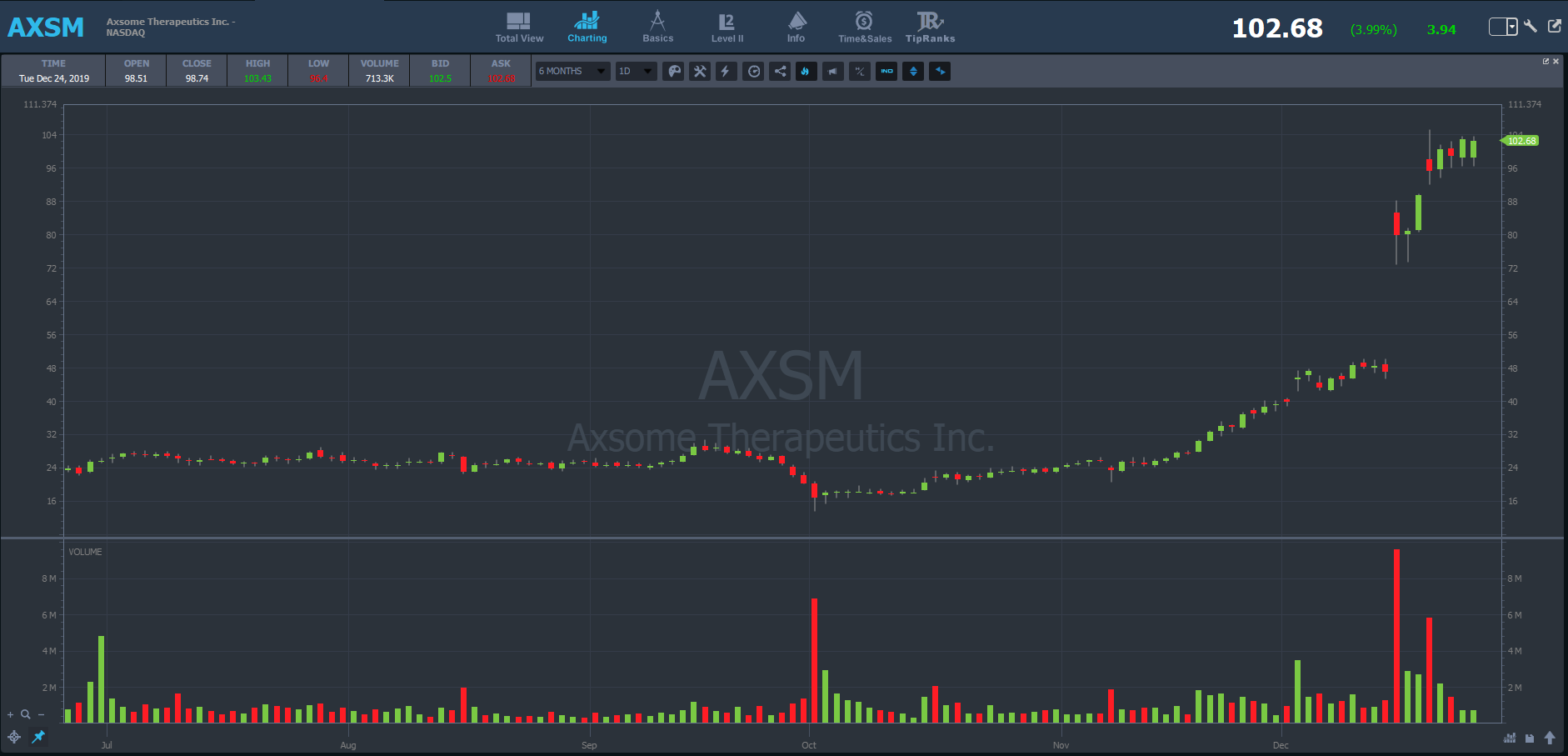Not too long ago, we covered options trading … Today, we’ll dive deeper and look at straddle options.
Every trader is different. We all have to find what works best for us — our personalities, time restraints, risk preferences, and schedules. That’s one reason trading is so challenging.
Fortunately, there are many different markets. Some people do better with swing trading, while others excel at day trading. Some traders may not be suited for equities at all. And some LOVE trading options.
The options market is its own beast. It plays by different rules than the equities market. Let’s look specifically at straddle options.
Straddle options are a popular strategy because if you do it well, you can minimize your risk … and the reward can be unlimited.
Table of Contents
What’s a Straddle Option?
To understand the straddle, you need to know some options market basics. Just like with stocks, you can go long and short options. But with options, you don’t buy or sell shares of an equity — you buy and sell options contracts.
So if you think the underlying instrument will increase in price during a given period, you buy a call option. But if you think the underlying security will decrease, you buy a put option.
Each option contract is for 100 shares of the underlying security. The contract’s strike price is the agreed-upon price between the buyer and seller at some point in the future or by the expiry date.
There’s an added level of complexity in the options market, and that can mean more volatility and increased risk.
It’s not uncommon to see options contracts move 1,000% or more intraday. That’s because each contract is for 100 shares of a security, and the contract owner isn’t just fighting against price — time is also a factor.
That’s where straddle options come into play. If you enter a straddle, you buy both a put and a call option for the same strike price and expiration date. It’s critical that you buy the same strike and expiry date, or the strategy won’t work.
So … why buy a call and a put at the same time?
Remember, options play by different rules. Options have a premium value that can allow you to capitalize on this approach. Buying both a call and a put option can help you reduce your overall risk. Again, options are risky, so the straddle option protects traders from significant losses.
There are two variations of the straddle option — long and short.
Long Straddle
You might assume from the name that traders take a long straddle when they believe the underlying security will increase in value. But that’s not the case.
The “long” part of this straddle indicates the trader is buying both a call and a put option. The options must have the same strike price and expiration date. Once a trader purchases the options, the long straddle is complete.
A trader who purchases the long straddle can profit when the underlying asset’s price moves away from the strike price. It doesn’t matter if the price moves up or down.
The key is how much it moves from the strike price. And since it doesn’t matter in which direction the asset moves, some traders use the long straddle on highly volatile stocks around earnings or other major news releases.
Traders use a long straddle to minimize risk but keep the potential to profit big profit if the stock price moves far from the strike price.
Short Straddle
With a long straddle, the trader buys both options. But to use a short straddle, you sell both a call and put option for the same strike and expiry date.
As we saw with the long straddle, a trader using a short straddle doesn’t believe the underlying asset will drop in value. This can be confusing if you’re used to trading equities where short-sellers profit from a decrease in a stock’s price.
Unlike the long straddle, traders use the short straddle on less volatile stocks that trade in a tight range. The closer the instrument stays to the strike price, the more the trader stands to profit.
While many short straddle option traders have a very high win rate … their upside is limited to the premiums collected when the trader initially sells the options. Plus, the risk of a short straddle is unlimited — the further the instrument’s price moves from the strike price, the larger the loss.
If you trade a short straddle, it’s critical that you manually manage your risk. There’s no cap on the risk, so you gotta be ready to cut losses before they balloon out of control.
Straddle Option Example
With any strategy, there are risks. The long straddle has a much lower win rate, but the risk/reward ratio is far superior to the short straddle.
And with the short straddle, you can see a win rate over 90% … But all it takes is one poorly managed trade to wipe out weeks of gains.
In StocksToTrade Pro, we’re all about managing our risk. Think of it this way: you can win less than 30% of your trades and still be profitable if you have a solid risk/reward ratio. So, let’s take a close look at an example of a long straddle and its risk/reward.
Let’s say stock XYZ closed at $100 a share on December 31, 2019.
To keep it simple, let’s imagine both the call and put options for a $100 strike price and January 10, 2020 expiry cost $10 each.
If you enter a long straddle, you gotta believe the stock will make a substantial move in either direction. Luckily, XYZ has earnings coming up, and that could cause big price moves.
When XYZ releases earnings, the stock tanks 20%. The large move makes the call option that you purchased worthless. But the put option exponentially increases in value. So the $10 put option could be worth $30 or $40 … That’s a 300%–400% return on your investment.
The increase in the option’s value all depends on the size of the move.
Let’s analyze this a little more. You had a fixed risk of $20 … but the potential to make well over $40 on a significant move in XYZ.
Straddle vs. Strangle Options
Many traders like using a straddle because it’s nondirectional. You don’t have to anticipate which direction the stock will move when using straddle options.
One of your biggest considerations is if an asset will make big moves due to a catalyst.
With straddles, direction doesn’t matter, but with strangles, the direction is crucial. A strangle is a similar options strategy to a straddle, but has a directional bias. Traders still buy both calls and puts with the same expiration date, but different strike prices depending on their bias.
Pros and Cons
Traders can use strangles to increase their reward on directional plays while still hedging their risk. If you believe a stock will react negatively in the coming days or after a news event, you could buy put options for your estimated strike price and buy call options at a higher strike.
If you’re right, your profit potential can be much higher than if using a straddle. But if you’re wrong, your risk is also higher than using a straddle. In some instances, strangles work better than straddles. But, in terms of keeping it simple, straddles are the way to go.
Straddle Option Calculator
You can easily get overwhelmed by all the calculations for straddle options — timing, risk/reward, and other option variables. You have substantially more factors to consider with options than equities or futures.
Professional traders fully dive into the options Greek values to increase their returns. An option’s delta, gamma, vega, and theta values all influence an option’s value. Trying to calculate all these values in your head or on a sheet of paper is painful. And it’s all too easy to make a mistake.
When using any options strategy, including the straddle, it’s wise to use an online options calculator. Online calculators can help you calculate the risk, reward, and possible payouts when trading options. Use these calculators to select your underlying instrument and analyze various expiry and strike prices.
Once you find the best expiry and strike for your needs, there’s usually a calculate button that generates a visual graph of the payouts. The graph shows the possible risk and returns at various times and prices until your potions expire.
When Does a Straddle Option Make You Money?
Before we go any further, let me say that nothing I say here should be taken as trading advice or advice to trade options. All trading is risky. No trade is risk-free or ‘safe.’ Do your research. And never risk more than you can afford.
Payouts vary, depending on the type of straddle you use. Long straddles work better during times of high volatility because securities can make big moves in a short time.
Short straddles can be great during times of low volatility because the underlying stocks hardly move.
What’s the key here? Volatility. Options market makers call this implied volatility (IV). The higher the volatility or anticipated volatility, the higher the IV value … and the higher the option value.
High volatility instruments will be more expensive because the volatility premium is factored into the price. If a trader buys a straddle during a time of high IV and the IV drops, the option value will decrease even if the underlying instrument doesn’t change in value.
On the other hand, if you purchase an option during a time of low IV and the IV increases, the option value will increase.
It’s essential to look at the IV of any option. You might have the right thesis but buy at the wrong time, and that can destroy your profit potential.
Solid Straddle Option Strategies
I think the best option straddle strategy is the long straddle. It provides the best risk/reward.
Using an online options calculator, you can calculate your finite long-straddle risk before you enter a trade. Once you purchase a long straddle, your profit potential is unlimited.
The best time to purchase a long straddle is before a significant news catalyst. So do your research: companies often release upcoming news events like earnings or a big FDA announcement to the public months in advance. A lot of traders don’t take the time to find these dates, but they’re usually publically available.
These catalysts can make a stock highly volatile. Lately, we’ve seen multiple 200%+ movers following FDA announcements. The huge move away from the strike price would be very profitable to a long straddle option trader.
Option sellers aren’t blind to these events and usually increase the IV before they happen. However, if the move following the event is large enough, the long straddle will be profitable regardless of the IV premium.
Ideal Situations for Long Straddles
Ideally, you’d enter a long straddle on a highly volatile stock with multiple upcoming public catalysts. These catalysts — positive or negative — bring volatility to the stock, and the stock will hopefully make a large move.
Recently, Axsome Therapeutics, Inc. (NASDAQ: AXSM) was a long straddle option trader’s heaven. The stock had multiple planned FDA announcements about milestones in their drug development.
The FDA announcements were positive, and AXSM was able to move many of the drugs it develops onto the next stages. AXSM even had multiple offerings during its impressive run, which only increased the volatility. The offerings and news catalysts increased the stock’s volatility.
Situations like AXSM don’t occur often. The stock went on a multi-month run and continues to test all-time highs.
Long straddle traders should look for golden opportunities like AXSM.
StocksToTrade’s amazing scanning tools make finding plays like AXSM easy. Of course you should scan the markets every day, but you don’t need to sacrifice your life to do it. STT has awesome scanning software that helps you maintain a strong watchlist with ease.
Maximum Profit
For long straddle options, there’s no maximum profit. In theory, an instrument’s price can move infinitely further from a strike price. The further the price is from the strike, the higher the profit.
Unfortunately, the maximum profit on short straddle options is minimized from the start. The seller collects a premium from the greeks and IV variables. Once the seller receives the premiums, they can’t make more profit from the trade.
Maximum Risk
The long straddle has a minimal risk, which is why it’s very popular. Buying both a call and put counteract each other and limit the risk. You can calculate the risk before you place the trade, and it will never change during the trade.
Unfortunately, the short straddle has unlimited risk. The further an instrument’s price moves from the strike price, the more substantial the loss. The high win rate of this strategy often makes up for the large loss potential…
… but that’s not how we like to trade at StocksToTrade Pro. That’s our elite trading community where we work together to find hot trading opportunities while focusing on education and trading smarter every day.
One of the smartest things you can do as a professional trader is to learn to manage your risk. It’s the most crucial part of trading. Before you take any trade, you should clearly define and understand your risk. Always protect yourself from blowing up.
Conclusion – Straddle Options and Opportunities
Straddle options can be an excellent way for newer traders to enter the options market. Long straddles can protect traders from large losses. That’s critical because of the volatile moves in the options market.
A lot of traders steer clear of options altogether. It’s a complicated strategy, and just like anything else, it comes with a learning curve. Options calculators can help, but if it doesn’t work for you, move on.
It’s up to you to find the right trading strategy that suits you, your needs, and your lifestyle.
At StocksToTrade Pro, a lot of us trade small. We have small accounts that we build over time. We want to be in the markets for the long haul. So we work hard to find what’s working in the markets day by day.
See just how helpful it can be to have a community and network of traders just like you. Join StocksToTrade Pro now!
Feel like you want to practice in the markets? Check out StocksToTrade’s paper trading feature. It’s a great way to test out new strategies using real-time data without risking a dime.
What’s your go-to strategy? Tell us what you think of this post — leave a comment!







